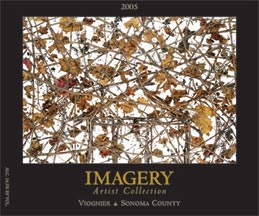|
|
Imagery Viognier, Sonoma County |
 |
|
Wine Details
Price:
$26.00 per bottle
Description:
Viognier is an exotic wine: one with the body of Chardonnay but the flavors of Riesling and/or Muscat. It has an intense aroma of peach, pineapple, and honeysuckle, and its generous palate impression and rich flavors.
|
|
|
Reviews
|

|
|
|
Back to Imagery Estate Winery information
|
|
|